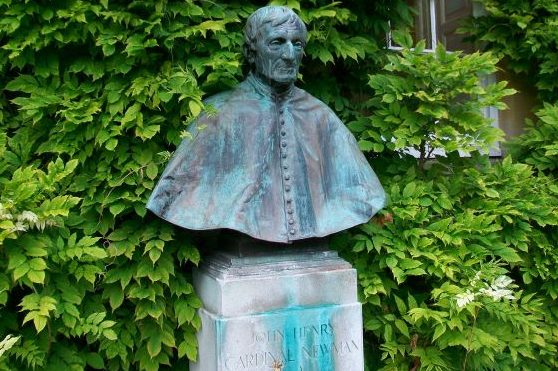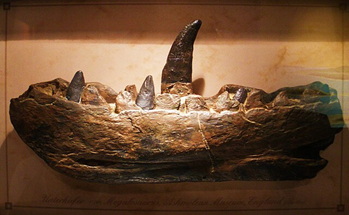Co-creator of the Oxford Movement
Although born in London, Newman spent much of the most important part of his life in Oxford. We were lucky to have him; his father, a Lombard Street banker, decided that he should go to University and at age 15 he left home with an older person to take care of him. By chance the stagecoach he took was that for Oxford rather than Cambridge. He was accepted by Trinity College in 1816 to read classics and mathematics.
His early letters home describe the food, “Fish, flesh and fowl, beautiful salmon, haunches of mutton and lamb and fine, very fine (to my taste) small beer served up on old pewter plates and misshapen earthenware jugs. Tell mama there are gooseberry , raspberry and apricot pies. Tell Harriet I have seen the fat cook”. Of his room he wrote, “much snapdragon on the wall … the emblem of my perpetual residence even to death in my University”.
After graduating, he became Fellow by examination of Oriel in 1822, was ordained in Christ Church cathedral in 1825 and, in the same year, appointed curate of St Clements and Vice-Principal of the now defunct Albion Hall. His final appointment in the Anglican church was vicar of St Mary the Virgin 1828-43, which included pastoral care of Littlemore.
In 1833, together with John Keble, after whom Keble college is named, and Edward Pusey (Pusey House), all Fellows of Oriel, he had founded the Oxford Movement. Because the philosophy of the movement was expounded in written tracts, its members, were known as Tractarians. Newman’s Tract 90 published in 1841 declared that the 39 Articles, which had laid down in 1563 the essential beliefs of the Church of England established by Henry VIII, were compatible with the doctrines of the Roman Catholic church. This proved highly controversial.
Roughly speaking, the Oxford Movement is synonymous with ‘high church’, characterized by the main service on Sunday being High Mass, special honour given to the Virgin Mary, genuflecting (bending one knee as a sign of respect), making the sign of cross throughout the service and the swinging of incense. The most obvious sign of all is that such churches are ablaze with candles. In the 19th century such practices were considered Romish.
In later life Newman wrote that at the publication of Tract 90: ‘“I was on my death-bed as regards my membership of the Anglican church.” He preached his last Anglican sermon at Littlemore in 1843. In 1845 he was received into the Roman Catholic church – a great shock to his followers. After a short period of study in Rome, with the approval of Pope Pius IX, he founded the Oratory of St Philip di Neri in Birmingham, where he lived until his death and where he is buried.
Newman was a popular preacher, a renowned theologian and a poet whose works have endured long after his time: His Dream of Gerontius was set to music by Sir Edward Elgar; his hymns, Lead Kindly Light and Praise to the Holiest in the Height (my favourite) appear in BBC’s Songs of Praise list of 100 top hymns. He was made Cardinal Deacon of San Giorgio in Velabro, Rome by Pope Leo XIII in 1879, beatified by Pope Benedict XVI in 2010 and canonized by Pope Francis in 2019 in an open-air Mass in St Peter’s Square attended by Prince Charles.
His was right about his perpetual presence in Oxford – In 1877 he was awarded Trinity college’s first Honorary Fellowship. His bust by Lέon-Joseph Chavaillard stands in the garden of Trinity Garden Quadrangle and his portrait by Herbert Rose Barraud hangs in Hall. A copy also hangs in Oriel College.
He is a person the city of Oxford can be proud of.
Written by volunteer Jane Allingham. Information taken from a pamphlet put out by the Friends of John Henry Newman.
Want to write your own Oxford-inspired post? Sign up as a volunteer blogger.



